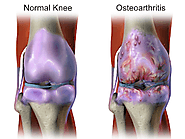-
About
- About Listly
- Community & Support
- Howto
- Chrome Extension
- Bookmarklet
- WordPress Plugin
- Listly Premium
- Privacy
- Terms
- DMCA Copyright
- © 2010-2025 Boomy Labs

 Health Solutions
Health Solutions
Listly by Health Solutions
Here are some dangerous diseases which may not cause any critical symptoms but you may have them.
Cholesterol is a waxy substance that the body uses to protect nerves, produce cellular tissues and produce certain hormones. Your liver produces all the cholesterol your body needs. In addition, your body receives cholesterol directly from the foods you consume (such as eggs, meat and dairy products). Too much cholesterol can have adverse health effects.
Urea nitrogen is a common product that the body produces after eating. Your liver breaks down the proteins in your food - and in doing so, it creates blood urea nitrogen, also called BUN.

Uremia is a dangerous disease that causes the accumulation of urea in the blood.Urea is a residue of metabolism that is produced by protein breakdown and excreted by the kidneys in the urine. When the kidneys cannot filter waste properly, they can enter the bloodstream.People suffering from uremia often have protein, creatine and other substances in their blood. This contamination can affect almost every system in the body.

Creatinine is a waste product that is produced by daily exercise of muscle, metabolism and metabolism by eating meat. As creatinine is released, it is filtered through the kidneys and out of the urine.

our bloodstream transfers creatinine to the kidneys, where it is filtered through the urine by the body. But if your kidneys are not working properly, your creatinine level in your blood may increase. This can lead to uremia, a life-threatening disorder.
Creatinine levels can be temporarily increased from strenuous exercise or the use of certain drugs such as sulfamethoxazole, trimethoprim or chemotherapy drugs.Talk to your doctor about ways to help lower your creatinine levels

Potassium is an important electrolyte, which is the mineral your body needs to work properly. Potassium is very important for your muscles and muscles, including your heart.While potassium is important for your health, getting the right amount of compost can be just as bad or, even worse, not getting enough. Generally, your kidneys maintain a high level of potassium by flying excess potassium out of your body. But for many reasons, the level of potassium in your blood can go up dramatically. This is called hyperkalemia, when blood has high potassium levels.

To minimize potassium build-up, a person with chronic kidney disease should stick to a low potassium content diet between 1,500 and 2,000 milligrams (mg) per day. Limiting phosphorus, sodium and fluids can also be important for people with renal dysfunction.
Most foods have potassium. To keep your levels low, avoid or eat less than half a cup a day of these potassium-rich foods:
Hypernatremia is an electrolyte imbalance, as indicated by high levels of sodium in the blood. In hypernatremia, the body contains too little water due to the amount of sodium, Mount said. This causes abnormally high levels of sodium in the blood - more than 145 mEq / L.

Kidney stones are hard collections of salt and minerals often made of calcium or uric acid. They form inside the kidney and can move to other parts of the urinary tract.The stones vary in size. Some are as small as the period at the end of this sentence - a fraction of a centimeter. Others can grow up to a few centimeters. Some kidney stones can become so large that they occupy the entire kidney.
Proteins are important components of all cells and tissues. Proteins are necessary for the growth, development and health of your body. Hyperproteinemia is an increase in protein concentration in the blood stream. High blood proteins are not a disease or a specific condition in themselves, but they can indicate that you have a disease.

Coronary Heart Disease (CHD), or coronary artery disease, develops when the coronary arteries become too narrow. Coronary arteries are blood vessels that supply oxygen and blood to the heart.
CHD tends to develop when cholesterol accumulates on the artery walls, creating plaques. These plaques cause narrowing of the arteries, reducing blood flow to the heart. Sometimes a clot can obstruct the blood flow, causing serious health problems.
The coronary arteries form the network of blood vessels on the surface of the heart that supplies it with oxygen. If these arteries shrink, the heart may not receive enough oxygen-rich blood, especially during physical activity. Coronary heart disease can sometimes cause a heart attack.

Migraine is a neurological disorder that can cause more symptoms.It is often characterized by intense and debilitating headaches. Symptoms may include nausea, vomiting, speech difficulties, numbness or tingling and sensitivity to light and sound.

The joints are the parts of your body where the bones meet. The joints allow the bones of your skeleton to move. The joints form the connections between the bones. They provide support and help you move. Any joint damage caused by illness or injury can interfere with movement and cause a lot of pain.
Uric acid is a natural residual product from the digestion of foods containing purines. Purines is found at high levels in some foods,

Very often, a high level of uric acid occurs when the kidneys do not effectively remove uric acid. The things that can cause this slowing in the elimination of uric acid include rich foods, overweight, diabetes, intake of some diuretics (sometimes called water pills) and consumption of too much alcohol.

Hepatitis C is a viral infection that causes inflammation of the liver, sometimes leading to severe liver damage. Hepatitis C virus (HCV) spreads through contaminated blood. Until recently, the treatment of hepatitis C required weekly injections and medications that many people infected with HCV could not take due to other health problems or unacceptable side effects.

Arthritis is the swelling and sensitivity of one or more joints. The main symptoms of arthritis are joint pain and stiffness, which usually worsen with age. The most common types of arthritis are osteoarthritis and rheumatoid arthritis.
Osteoarthritis causes the decomposition of cartilage, the hard and slippery tissue that covers the ends of the bones where it forms a joint. Rheumatoid arthritis is a disease in which the immune system attacks the joints, starting from the lining of the joints.
Uric acid crystals, which form when there is too much uric acid in the blood, can cause gout. Infections or basic diseases, such as psoriasis or lupus, can cause other types of arthritis.

Polycystic ovary syndrome (PCOS) is a common hormonal disorder in the women of reproductive age. PCOS affects female ovaries, reproductive organs that produce estrogen and progesterone, hormones that control the menstrual cycle. The ovaries produce a small number of male hormones called androgens.

Jaundice is the medical term that describes the yellowing of the skin and eyes. Jaundice itself is not a disease, but is a symptom of several possible underlying diseases. Jaundice forms when there is too much bilirubin in the system. Bilirubin is a yellow pigment created by the decomposition of dead red blood cells in the liver. Normally, the liver removes bilirubin along with red blood cells. Jaundice may indicate a serious problem with the function of red blood cells, liver, gall bladder or pancreas.

Pancreatitis is an inflammation in the pancreas. The pancreas is a long, flat gland that lies behind the stomach in the upper abdomen. The pancreas produces enzymes that help digestion and hormones that help regulate the way the body processes sugar (glucose).
In pancreatitis, the enzymes that are normally released in the digestive tract begin to affect the pancreas itself. The gland becomes swollen and inflamed. Numerous enzymes are released into the surrounding tissues and into the bloodstream.
Depression is classified as a mood disorder. It can be described as feelings of sadness, loss or anger that interfere with a person's daily activities. People experience depression in different ways. It can interfere with daily work, resulting in lost time and reduced productivity. It can also affect relationships and some chronic health conditions.
Alzheimer's disease is a progressive disorder that causes waste (degenerate) and death of brain cells. Alzheimer's disease is the most common cause of dementia: a continuous decline in thinking, behavioral and social skills that interrupts a person's ability to function independently.
Blood cancer occurs when the development of blood cells is disturbed. This prevents them from functioning properly and can escape control. In most blood cancers, the normal process of blood cell development is interrupted by the uncontrolled growth of an abnormal type of blood cell.

A rapidly evolving health story broke out in late December, when a new disease originating in Wuhan, China made headlines. Reports on the number of infected people have grown rapidly and isolated cases of this new coronavirus - called by scientists 2019-nCoV - have appeared in several countries due to international travel.
Hantavirus Pulmonary syndrome (HPS) is an infectious disease characterized by flu-like symptoms that can quickly develop into life-threatening respiratory problems. It is a serious, sometimes fatal, respiratory disease in humans caused by hantavirus infection.
Different types of hantavirus can cause hantavirus lung syndrome. They are transported by different types of rodents, in particular deer mice. You first get infected by breathing air infected with hantaviruses that disperse in rodents and excrements.
